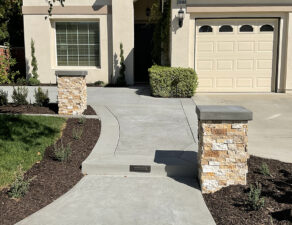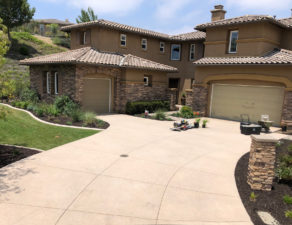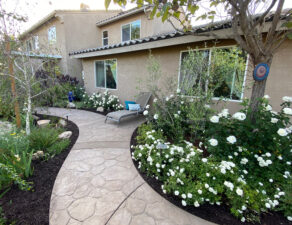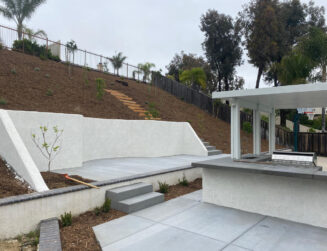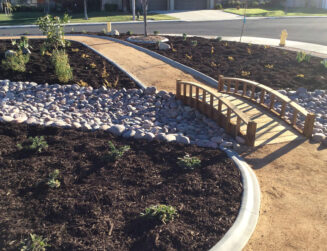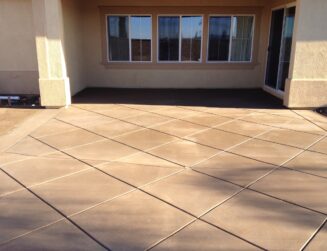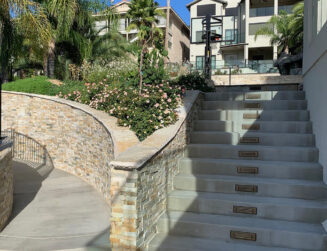
One of the more perplexing problems with hardscape is that often we cannot control what Mother Nature decides to do. Even with the best planning, sometimes water does not drain the way we hope it will. In those cases we often must implement a solution to deal with unwanted water runoff, which can cause erosion and damage if we don’t do something about it.
Permeable concrete was invented with this problem in mind. This type of concrete is composed of concrete, coarse aggregate, and water, with very little or no fine aggregate such as sand. The result is a concrete that is porous, and allows water to flow through. This clever solution reduces runoff and prevents problems due to standing water and/or erosion.
The benefits of permeable concrete are numerous:
Stormwater management
Environmental management
Lower costs over time (because you don’t need to construct another method to deal with water runoff)
Easy to place
Aesthetic appeal
Your mind might already be spinning with the possibilities. And you’re right; permeable concrete can be used in a variety of applications, such as…
Sidewalks
Driveways
Cycling paths
Parking lots
Sports use
Patios
Walls
Sub-base for other types of structures
And more!
Permeable concrete is good for the environment, too. It allows water to return to underground aquifers, while trapping solids and pollutants that ordinarily might contaminate groundwater.
All of that sounds great, but are there any drawbacks to permeable concrete? Sort of. While permeable concrete is still plenty strong for the applications listed above (and others), it isn’t strong enough for highways or other extremely high-use areas. Permeable concrete must also be installed carefully to allow for the right amount of water absorption; otherwise, the water table below the structure could rise and cause problems.
For more information on permeable concrete and installation of your project, give us a call. We can assess your needs and help you decide if this unique solution is right for your landscaping application.

